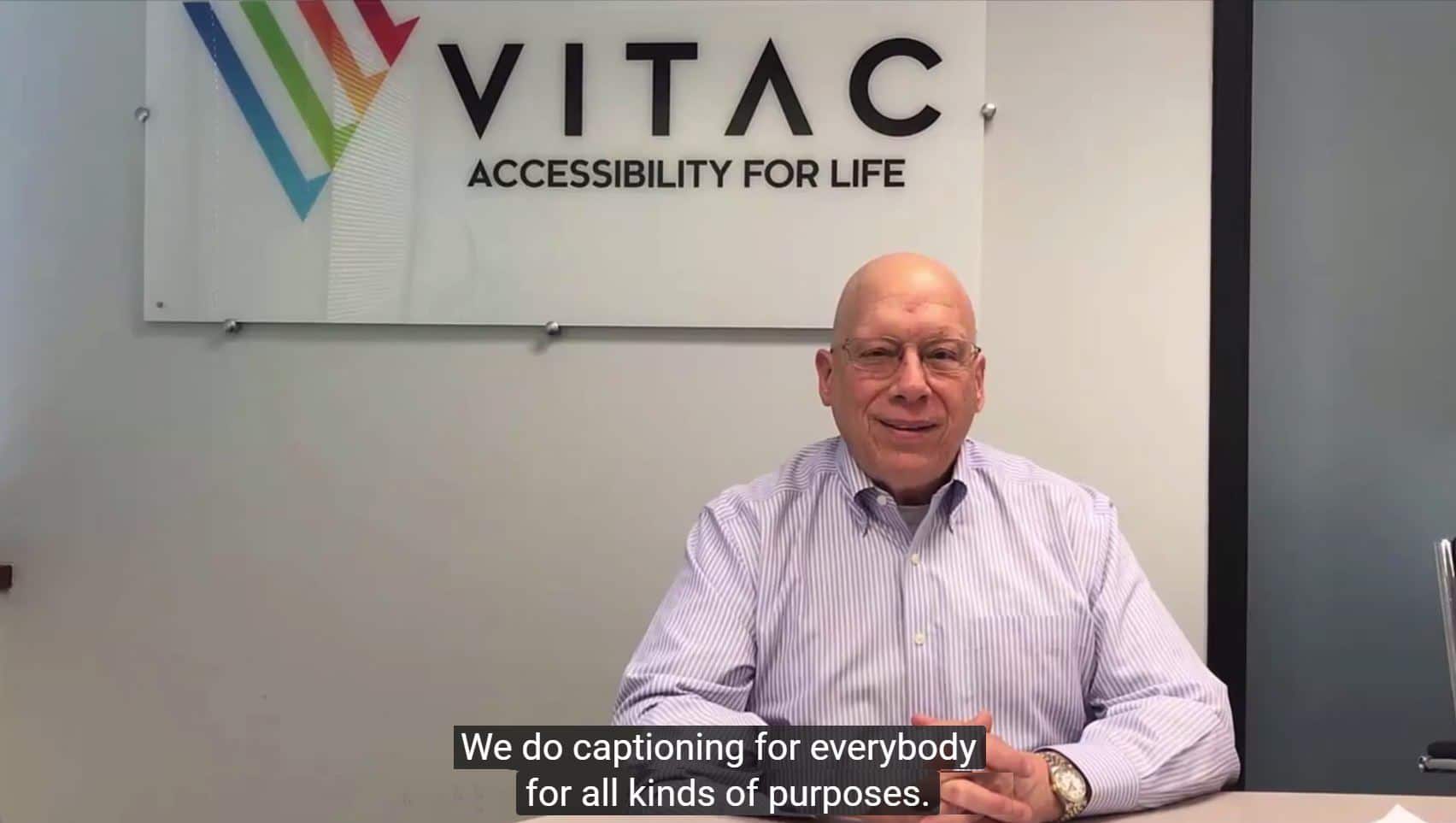As the largest provider of closed captioning in the United States, we often get questions about the services we provide, how captions work, and the ease in which captions can be added to all content, just to name a few.
To better help caption consumers and clients understand our wide range of offerings, as well as some of the accessibility solutions available to them, VITAC is thrilled to introduce a new video series – “VITALK” – that will highlight who we are, what we do, and what you can do to ensure accessibility everywhere.
In our first video, VITAC’s Chief Marketing Officer John Capobianco takes a few minutes to explain some of our accessibility offerings and caption solutions, and talks about the millions of people who benefit from captions, including:
- The tens of millions of Americans in the deaf and hard-of-hearing community;
- The millions of Americans over the age of 62 who suffer from hearing loss and do not use hearing aids;
- Millions of children learning to read who use captions as a tool to improve their skills;
- People for whom English is not their first language who often use captioned television as a literacy and language-learning tool; and
- Those who simply prefer to watch captioned content — namely nearly 58 million millennials — and view captions on their mobile devices.
So click the video below, and watch this space for future posts and updates.




